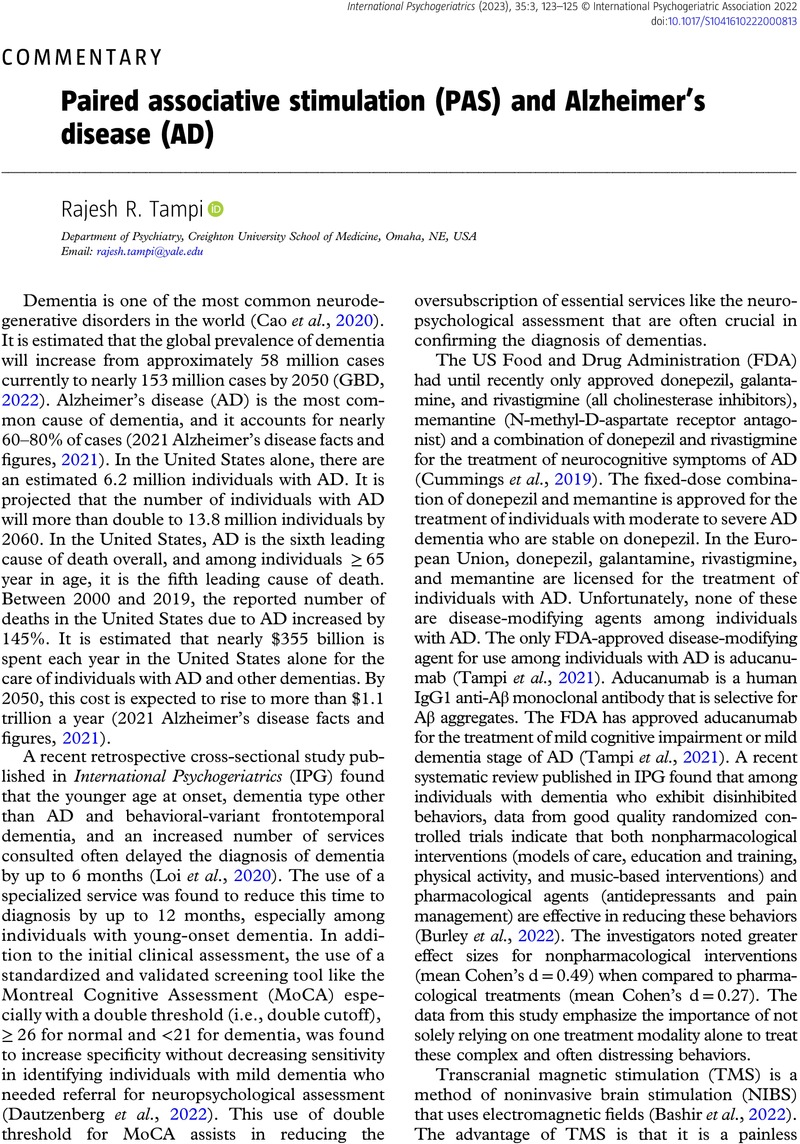Crossref Citations
This article has been cited by the following publications. This list is generated based on data provided by Crossref.
Murphy, Kayla
Khan, Amber
Bachu, Anil
and
Tampi, Rajesh
2023.
Treatment of behavioral and psychological symptoms of dementia using transcranial magnetic stimulation: a systematic review.
International Psychogeriatrics,
Vol. 35,
Issue. 11,
p.
611.
Bhatia, Shiveena
Singh, Manjinder
Sharma, Pratibha
Mujwar, Somdutt
Singh, Varinder
Mishra, Krishna Kumar
Singh, Thakur Gurjeet
Singh, Tanveer
and
Ahmad, Sheikh Fayaz
2023.
Scaffold Morphing and In Silico Design of Potential BACE-1 (β-Secretase) Inhibitors: A Hope for a Newer Dawn in Anti-Alzheimer Therapeutics.
Molecules,
Vol. 28,
Issue. 16,
p.
6032.
Gholami, Amirreza
2023.
Alzheimer's disease: The role of proteins in formation, mechanisms, and new therapeutic approaches.
Neuroscience Letters,
Vol. 817,
Issue. ,
p.
137532.
Hosen, Md. Eram
Rahman, Md. Sojiur
Faruqe, Md Omar
Khalekuzzaman, Md.
Islam, Md. Asadul
Acharjee, Uzzal Kumar
and
Zaman, Rashed
2023.
Molecular docking and dynamics simulation approach of Camellia sinensis leaf extract derived compounds as potential cholinesterase inhibitors.
In Silico Pharmacology,
Vol. 11,
Issue. 1,
Ojo, Michael C.
Mosa, Rebamang A.
Osunsanmi, Foluso O.
Revaprasadu, Neerish
and
Opoku, Andy R.
2024.
In silico and in vitro assessment of the anti-β-amyloid aggregation and anti-cholinesterase activities of Ptaeroxylon obliquum and Bauhinia bowkeri extracts.
Electronic Journal of Biotechnology,
Vol. 68,
Issue. ,
p.
67.





